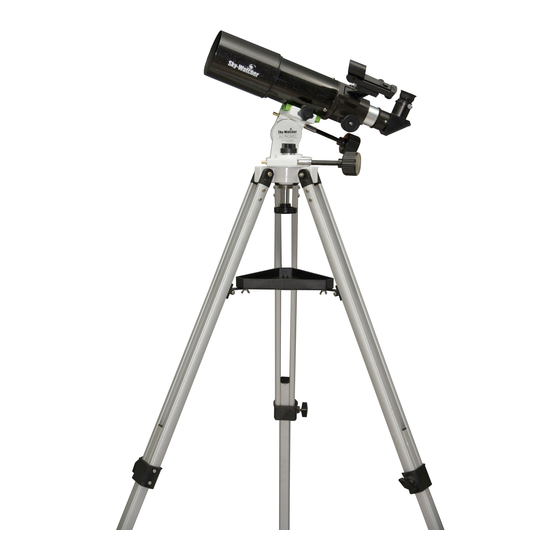
Table of Contents
Advertisement
Advertisement
Table of Contents

Summarization of Contents
Installing the Telescope
Mounting the telescope accessories
Details on attaching telescope accessories like eyepieces to refractors and Maksutovs.
Focusing
Guidance on adjusting the focuser for a sharp image using focus knobs.
Red Dot Finder Setup
Attaching the red dot finder
Securely mounting the red dot finder bracket into the slot.
Aligning and using the Red Dot Finder
Process for aligning the finder scope with the main telescope for accurate aiming.
Operating the CQ40 Mount
Horizontal rotation
Adjusting the mount's orientation for polar alignment.
Pointing to Celestial Poles and Horizons
Pointing to the North Celestial Pole (NCP)
Aligning the telescope with the North Celestial Pole for tracking.
Pointing toward the western or eastern horizon
Positioning the telescope to view objects on the horizon.
Pointing to Directions and Objects
Pointing to directions other than due North
Using RA and Dec positions to point the telescope in various directions.
Pointing at an object
Achieving accurate pointing to celestial objects.
Using the Setting Circles
Reading the R.A. setting circle
Understanding the scale and units of the Right Ascension setting circle.
Setting (calibrating) the R.A. setting circle
Procedure to calibrate the R.A. setting circle using a star.
Choosing the Appropriate Eyepiece
Calculating the magnification (power)
Formula to calculate telescope magnification based on focal lengths.
Calculating the field of view
Method to determine the actual field of view through the telescope.
Calculating the exit pupil
Formula for calculating the exit pupil of a telescope-eyepiece combination.
Observing the Sky
Sky conditions
Factors affecting astronomical observation, like seeing and transparency.
Selecting an observing site
Criteria for choosing an optimal location for stargazing.
Choosing the best time to observe
Timing observations for better atmospheric conditions and object visibility.
Cooling the telescope
Importance of allowing the telescope to acclimate to ambient temperature.
Adapting your eyes
Tips for preparing eyes for optimal low-light viewing.
Cleaning your telescope
Guidelines for maintaining telescope optics and eyepieces.
















Need help?
Do you have a question about the Explorer-130PS and is the answer not in the manual?
Questions and answers